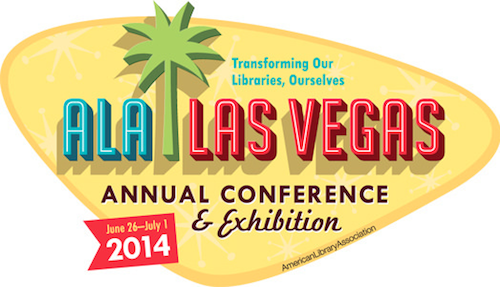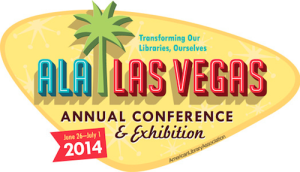
The Game Making Interest Group’s meeting this year centered around the recently published book Gaming in Libraries: Essays on Using Play to Connect and Instruct (McFarland, 2014), which was edited by the group’s chair, Breanne Kirsch. The Sunday discussion, sponsored by LITA, was filled with short lightning presentations from those who contributed to the book, giving attendees an opportunity to directly engage authors with questions about their work.
Mary Broussard, instructional services librarian at Lycoming College in Williamsport, Pennsylvania, has designed a number of games for outreach and instruction, including the popular Goblin Threat. Broussard spoke about knowing when to create games for the library, highlighting from her experience best practices for design and how to measure success of a gaming program. 
Andrew Battista, assistant professor of information literacy and reference librarian at University of Montevallo in Alabama, shared his use of badges as a replacement for grades for his curation culture class. Battista said that grades are a difficult way to represent all the skills and concepts learned in class. Badges, on the other hand, provide the chance to represent literacies and platforms a student actually learns over the course of a semester.
Kirsch and Virginia Alexander, both librarians at the University of South Carolina Upstate, discussed the process of creating and implementing their Agoge information literacy game for transfer students. The game is interactive and allows students to practice key information literacy skills with a game-based approach.
Heath Ward, youth services librarian supervisor at Pickens County (S.C.) Library, spoke about his work creating physical games that tie in with literature as a way to promote books to reluctant readers and engage teens with new genres. Ward walked through the details of developing activities around The Hunger Games, including marshmallow gun wars that re-create scenes from the trilogy. The marshmallow shooters themselves are easily constructed from PVC piping available at local hardware stores and can cost as little as $1.60 to build.
Jason Battles from the University of Alabama shared information on transmedia games—which, much like Alternate Reality Games, are narrative-based game experiences that transcend multiple platforms and formats. Battles gave great examples of transmedia games currently in use, many of which can be found at the Alternate Reality Gaming Network.
Lastly, Bohyun Kim, associate director for Library Applications and Knowledge Systems at University of Maryland, Baltimore, shared her perspective on how games fit within the medical and health care fields and the challenges that come from needing to demonstrate their value as a pedagogical tool.
The discussion was an informative overview of how different libraries are exploring games and using game elements to help connect with and engage their student populations. The ideas and explorations presented were fantastic starting points for academic and public librarians who are interested in building games.
More information can be found on the interest group’s wiki page or its ALA Connect page.
BRIAN MAYER is a gaming and library technology specialist. He designed Freedom: The Underground Railroad (Academy Games, 2013) and is coauthor of Libraries Got Game: Aligned Learning through Modern Board Games (ALA Editions, 2010).
See, hear, and read more about what’s going on at Annual—in real time and after.
Twitter: @alaannual and #alaac14
Facebook: https://www.facebook.com/events/489205011101981/
YouTube: http://www.youtube.com/user/AmLibraryAssociation
Flickr: http://www.flickr.com/groups/alaac14/
Pinterest: http://pinterest.com/alaannual/
Tumblr: http://ala-con.tumblr.com


